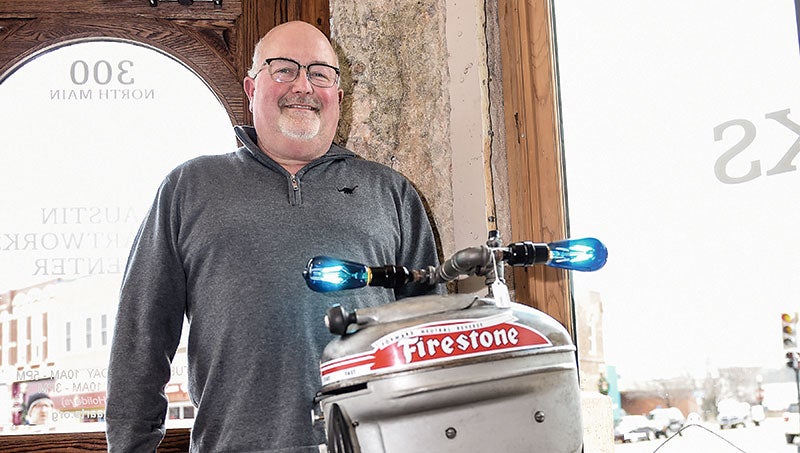Latest on COVID-19 in MN: Walz plan slow-walks bar, restaurant restarts
Published 4:54 pm Wednesday, May 20, 2020
|
Getting your Trinity Audio player ready...
|
By Brian Bakst
In moves certain to get pushback, Gov. Tim Walz Wednesday unveiled plans to let bars and restaurants serve sit-down customers beginning June 1 — but only at outdoor tables. He loosened other curbs but would not put dates on when other vital parts of daily life in Minnesota could resume.
He stopped short of letting customers sit at the bar, in restaurant dining rooms or other indoor tables for now. Hair care businesses can provide in-shop services, but at a limited capacity.
Walz acknowledged the ongoing restrictions crowds and venues are maddening and frustrating, especially for bars and restaurants, businesses he described as integral to Minnesota life. However, he said the virus won’t allow business as usual.
“These health guidelines are not an impediment to opening the economy. They’re key to opening up the economy,” Walz told reporters, adding that consumers ultimately will decide when it’s safe to return to bars and eateries.
Under Walz’s plan, restaurant staff would have to wear masks; customers who are waiting for food would be encouraged to. There must be 6 feet between tables, and patios will have to operate at a lower capacity than normal — no more than 50 people at a time, with parties limited to four, or a family of six. Reservations will be required.
Curbside pickup for takeout food would be permitted as before.
The plan also calls allows for individual youth sports to resume some of level of activity per Health Department guidelines, but no team games can be played.
Campgrounds and charter boats are now considered open, but summer camps will remain day use only.
The governor’s new guidance will permit a gradual reopening of personal care businesses, such as barbershops, salons and tattoo parlors. They would be required to have clear plans for social distancing, sanitizing and other safety measures to keep coronavirus risks down, including operating at 25 percent capacity at first.
Walz said he planned to get a haircut on June 4, his 26th wedding anniversary.
Business groups, however, quickly rapped Walz for not going far enough.
“The approach announced today doesn’t sufficiently recognize the ability of businesses – many of them small businesses – to innovate and protect employees and customers,” the Minnesota Chamber of Commerce said in a statement.
Large indoor worship services still on hold
Walz’s two-month stay-at-home order expired Monday. Walz replaced it with a “stay safe” order that further loosened restrictions on some retail operations and allowed group gatherings of 10 or fewer people, including at places of worship.
Steve Grove, the state’s employment and economic development commissioner, outlined future phases of reopening, but neither he nor the governor would say when they would happen.
In that next phase, gatherings of 20 or fewer would be OK, and indoor service in restaurants and bars would be allowed at half capacity.
Grove said religious services would be part of that next phase — including allowing outdoor services of up to 100. However, he said singing at those services would have to be limited. As far as COVID-19 goes, “singing is one of the worst things you can do,” Grove said.
The decision to delay the regular return of indoor religious services drew an immediate rebuke from Senate Majority Leader Paul Gazelka, R-East Gull Lake. “We have to allow people to get back to their lives,” he said in a statement. “If you can get a haircut, shop at a mall, or eat at a restaurant, you should be able to go to church.”
Walz acknowledged the delay on large indoor religious services was “not a perfect answer” and that “there is a very strong sense of urgency to figure this next piece out.”
In a later phase, gyms and fitness centers would be allowed to reopen with guidelines, along with bowling alleys, movie theaters and other entertainment venues. Grove said only that the governor hoped to get to those next phases as soon as possible.
Bar and restaurant owners have become increasingly concerned they’ll go under if they can’t reopen soon to dine-in customers.
While Walz’s stay-at-home order pushed back the disease’s peak in Minnesota and bought officials time to prep the health care system for a surge, it delivered a huge economic blow to Minnesota’s restaurant and hospitality industry.
Many had wanted restrictions further eased in time for the upcoming Memorial Day Weekend. Walz, though, indicated that will not happen, noting the virus does not respect calendars.
Strategy paying off?
The plan comes as Minnesota’s COVID-19 toll continues to rise, with the state on Wednesday reporting 777 deaths since the pandemic began, up 29 from Tuesday. The number of Minnesotans currently hospitalized rose slightly to 550 while those needing intensive care slipped to 212.
“It is going to get worse here before it gets better. That is an absolute guarantee,” Walz said of the expected surge in cases and hospitalizations now expected later this summer.
While deaths, case counts and hospitalizations are still growing, there have been signs that the strategy is paying off despite the economic pain it’s triggered.
Health Commissioner Jan Malcolm on Tuesday noted that the time it now takes for case counts to double is stretching out longer — about 13 days currently — helping to make the spread of the disease more manageable.
On Wednesday, statistics showed that of the 17,670 people who’ve tested positive for the disease in Minnesota since the pandemic began, nearly 70 percent have recovered to the point they no longer need to be isolated.
Health officials say they’re watching several key metrics to gauge if the disease is accelerating as restrictions are lowered. Among them: the number of days it takes for cases to double, the amount of daily testing, the proportion of positive tests and the level of community spread that can’t be traced to specific contacts — an indication the disease might be more widespread.
The state continues to add investigators to contact those infected and work to reach others who might have had contact with them and might also be potentially infected.
While the numbers of positive tests and hot spots for the disease are spread across sectors and regions of Minnesota, more than 80 percent of those who’ve died from the disease were living in long-term care, nearly all had underlying health problems.
A purchase agreement released by the Minnesota Department of Administration on Tuesday shows the state paid about $5.5 million for the 71,000-square-foot property. State officials say the space is expected to have capacities to hold up to 5,100 bodies, and could be needed if predictions of 1,000 deaths per week at the coronavirus peak hold up.
Meatpacking hot spots remain
Many of the recent outbreaks outside the Twin Cities metro area are focused around meatpacking plants. Officials have intensified testing in those hot spots, uncovering more infections.
On Tuesday, Malcolm said health leaders were focused on eight counties outside the Twin Cities metro area where outbreaks were centered around packing plants.
In southwestern Minnesota’s Nobles County, where an outbreak hit Worthington’s massive JBS pork plant, about 1 in 16 people have tested positive for COVID-19. In mid-April, there were just a handful of cases. By Tuesday, there were 1,396 confirmed cases, although the numbers are rising at a much slower rate than in previous weeks.
The JBS plant shut on April 20 but has since partially reopened with expanded hygiene and health monitoring measures.
Similar problems have been reported in Stearns County, where COVID-19 cases tied to two packing plants — Pilgrim’s Pride poultry plant in Cold Spring and Jennie-O Turkey in Melrose — have skyrocketed. An undisclosed number of workers at both plants have tested positive for the virus.
There were about 55 confirmed cases in Stearns County two weeks ago. By Wednesday, confirmed cases were at 1,831 with 11 deaths.
Kandiyohi County in west-central Minnesota is also seeing cases continue to climb a month after officials with the Jennie-O turkey processing plant there said some employees had tested positive for the coronavirus. The county had confirmed three COVID-19 cases then.
On Wednesday, the Health Department reported 426 people have now tested positive.
While the counts in those counties are high relative to their population, officials say the growth in new cases in those areas appears to be stabilizing.




